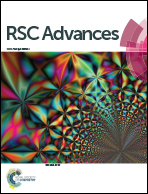Prediction of the stress relaxation property of diene rubber composites by artificial neural network approaches
Abstract
An artificial neural network (ANN) based on an improved radial basis function (RBF) was established to predict the stress relaxation property of diene rubber composites during ozone aging. The compression ratio, ozone concentration, ozonation time, and rubber type were used as the input vectors, and the stress relaxation coefficient (F/F0) was used as the output vector. Regularization was introduced into the RBF ANN, and the average prediction accuracy of the established ANN for three types of diene rubber was 98.1%. Compared with back-propagation (BP) ANN, the proposed model displays better prediction performance. Moreover, a sensitivity analysis based on the analytical expression generated by the RBF indicates that compression ratio is the most important factor affecting the stress relaxation response. The RBF prediction shows that rubber under a high compression ratio possesses a higher F/F0 than that under a low compression ratio in the range of 25% to 35%, indicating that highly compressed rubber experiences a low degree of ozone attack. Analysis of the relationship between the microstructure and the stress relaxation property of the polymer reveals that application of a high compression ratio reduces the free volume and degree of cracks and that rubber under a high compression ratio has high ozone resistance. This finding is in agreement with the above RBF prediction. Comparisons between the RBF model predictions and the experimental data indicate that the well-trained model provides a deep understanding of the stress relaxation property and has the potential to guide development of materials highly resistant to ozonation.


 Please wait while we load your content...
Please wait while we load your content...